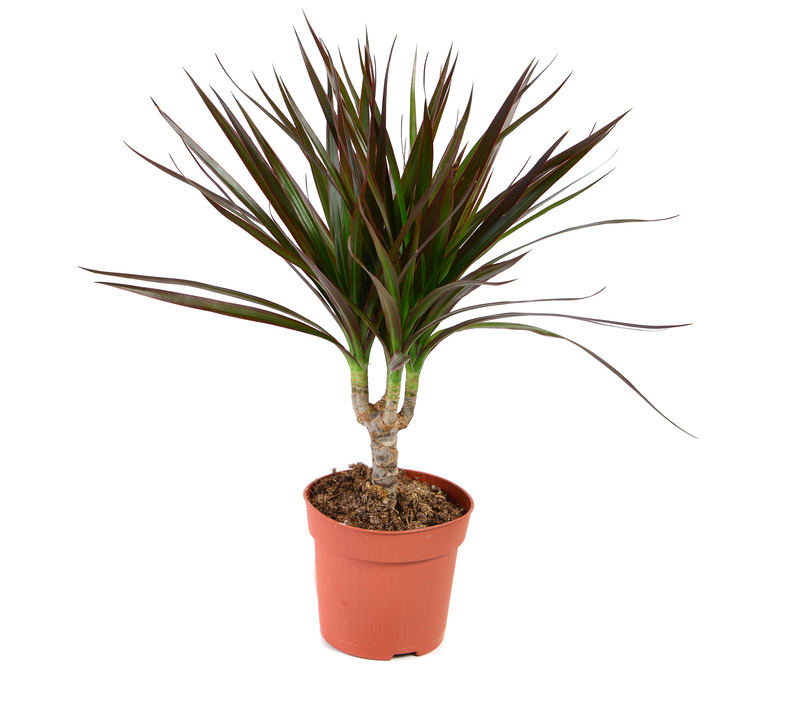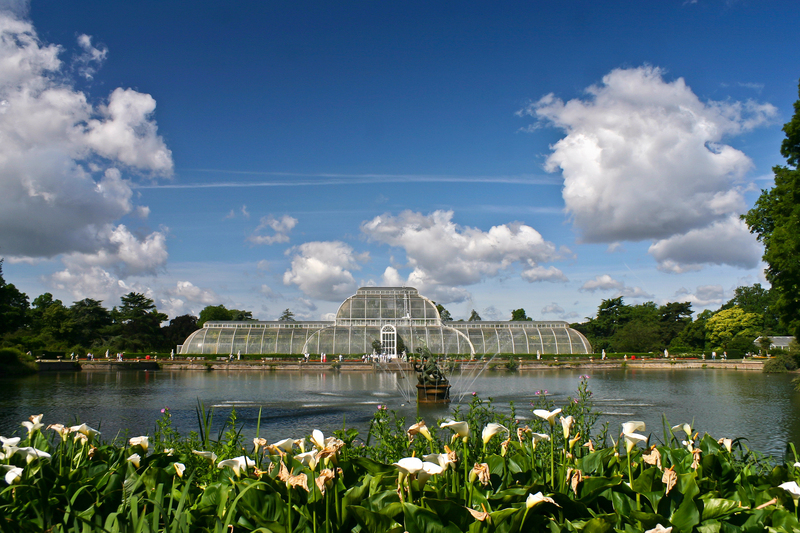Gardening Safely and Joyfully with Your Canine Companion
Posted on 28/05/2025
Gardening Safely and Joyfully with Your Canine Companion
Gardening has long been a favorite activity for people seeking peace and connection to nature. For dog lovers, sharing the garden with a furry friend multiplies the joy. However, gardening with dogs presents unique challenges and opportunities. In this comprehensive guide, you'll learn how to garden safely, create a canine-friendly oasis, and make outdoor time truly special for both you and your four-legged companion.
The Joys of Gardening with Your Canine Companion
There's nothing quite like digging in the dirt with your loyal dog frolicking nearby. Whether they're snoozing in the sun, chasing butterflies, or simply keeping you company, dogs bring a special kind of delight to the gardening experience. Gardening together can benefit both human and hound by providing exercise, stimulation, and a deeper bond.
- Physical Activity: Gardening is a great form of exercise, and dogs love the chance to roam and explore.
- Mental Stimulation: New sights, smells, and sounds keep your pet's mind active and engaged.
- Bonding: Sharing outdoor activities can strengthen the relationship between you and your pup.
- Stress Relief: Spending time in nature together can help reduce stress for both you and your dog.

Creating a Dog-Friendly Garden
Before you start digging (literally and figuratively) into gardening with your dog, consider how to design your garden to be both beautiful and safe. A dog-friendly garden adds enjoyment for both of you, reduces negative behaviors, and keeps your pet secure and protected.
Fencing and Boundaries: Keep Your Pup Safe
A secure fence is the foundation of a dog-safe garden. Ensure your yard has sturdy fencing that's tall enough (at least 4-6 feet, depending on your breed) and free from holes, gaps, or weak spots.
- Diggers: Consider adding a barrier underground if your dog loves to dig under fences.
- Jumpers: Use appropriate height fencing and avoid placing objects near boundaries that could aid climbing.
- Escape-artists: Routinely check for wear and tear on fences and gates.
For extra peace of mind, you can use double gates and dog-proof latches. Designate clear boundaries so your canine knows where play areas are and where fragile plants begin.
Paths and Play Zones
Dogs thrive when given their own space. Design paths with materials like pea gravel, flagstone, or mulch that are easy on paws. Include designated digging zones or shaded spots for relaxation. Avoid sharp rocks or hot pavement, which can harm sensitive feet.
- Dog Paths: Winding paths encourage gentle exploring and keep romping dogs off fragile planting beds.
- Digging Pits: Fill a sandbox with sand or soft dirt so enthusiastic diggers have a safe outlet for their energy.
- Shade: Provide cool spots with shade sails, shrubs, or trees, especially important in hot climates.
Dog-Safe Plants for Your Garden
Many common garden plants look innocent but are toxic to pets. Before you plant, research each species for dog safety.
- Safe Choices: Sunflowers, marigolds, snapdragons, camellias, rosemary, thyme, and petunias are generally considered dog-friendly.
- Toxic Plants to Avoid: Azaleas, daffodils, tulips, rhododendrons, foxglove, hydrangeas, lilies, sago palms, and oleander are all dangerous if ingested.
- Edible Treats: Planting blueberries, strawberries, or carrots gives your pup a fresh, healthy snack (just be sure these areas are pesticide-free!).
If your dog eats a questionable plant, contact your vet immediately. For a full list of toxic and dog-safe plants, consult resources like the ASPCA's Toxic Plant List.
Avoiding Harmful Chemicals
Pet-safe gardening means careful product selection. Many fertilizers, pesticides, and herbicides pose risks for dogs.
- Go Organic: Favor organic mulches, fertilizers, and pest controls. Compost and natural deterrents help keep pets safe and gardens healthy.
- Secure Products: Store all chemicals in locked cabinets out of reach.
- Pet-safe Mulch: Avoid cocoa mulch (toxic to dogs). Use cedar, pine, or untreated wood chips instead.
*Never let pets access garden areas freshly treated with chemicals until they are fully dry and safe.*
Training Your Dog to Be a Garden Buddy
Dogs are curious by nature, and their enthusiasm sometimes leads to trampled beds or unwanted digging. Consistent training can make a world of difference.
Teaching "Leave It" and "No Dig"
Training your dog to avoid certain spots or plants is vital. Use positive reinforcement:
- Reward Good Behavior: Treats, praise, and play time for staying on paths or out of beds.
- Redirect: If they dig in the wrong place, calmly redirect them to their designated digging zone.
- Consistency: Repeat training sessions regularly and remain patient.
Active Supervision
Until your dog fully learns the rules, supervision is essential. Keep an eye on them while gardening, step in if they start nibbling plants, and encourage good habits. Over time, most dogs adapt and learn to enjoy the space respectfully.
Fun Activities for Dogs in the Garden
Your garden can be a canine playground with a bit of creativity and care. Here are some favorite activities to make your dog's time outdoors fun and enriching.
Agility and Obstacle Courses
Set up tunnels, low jumps, or weave poles using garden-safe materials. Agility courses help with mental and physical exercise, burning off energy while improving obedience and balance.
Nosework and Scent Games
Dogs have a remarkable sense of smell. Hide treats or safe toys in easy-to-clean containers or around the garden for a challenging sniff-and-seek game. Many breeds thrive on this kind of mental workout.
Hydration Stations and Splash Zones
On hot days, set up a shallow dog pool or sprinkler for water play. Always provide fresh water, especially if you're gardening under the sun.
Interactive Play
Play fetch with safe toys, or simply relax together on a blanket. Remember, shared downtime is invaluable, too.
Spotting and Managing Hazards in the Dog-Friendly Garden
While gardens can seem like a paradise, certain hidden dangers deserve your attention when sharing the space with a dog.
- Sharp Tools and Equipment: Store shears, rakes, and mowers safely out of reach.
- Compost: Some items in compost (like moldy food, coffee grounds, or onion skins) are toxic to dogs. Use a closed compost bin system.
- Mulching Dangers: As mentioned above, beware of toxic mulches like cocoa bean hulls.
- Standing Water: Ponds or buckets can quickly become breeding grounds for mosquitoes or pose drowning risks for small dogs. Use covers where possible and refresh water often.
- Wildlife: Be cautious with areas where snakes, foxes, or larger wildlife may enter. Secure fencing limits wildlife incursions and keeps dogs safe.
Dog Grooming and Cleanliness after Gardening
After a gardening session, it's important to check and clean your dog to avoid any health issues.
- Paw Checks: Look for cuts, thorns, or stuck debris in your dog's paw pads.
- Tick and Insect Inspection: Examine fur and skin for ticks, fleas, or bites, especially after playing near bushes and tall grass.
- Bath Time: If your dog loves rolling in the dirt or mud, a rinse may be needed!
- Ear and Eye Care: Clean ears and wipe eyes if your dog gets into dusty or pollen-heavy flower beds.
Frequently Asked Questions about Gardening with Dogs
Are there any universal garden plants that are safe for dogs?
Some of the safest garden plants for dogs include sunflowers, snapdragons, zinnias, rosemary, parsley, carrots, strawberries, and marigolds. Always confirm plant safety for your particular dog and situation.
How can I prevent my dog from digging up my garden?
Give your pet a designated digging zone, use physical barriers (like chicken wire below the soil), and redirect their energy with play or scent work. Consistent training is key.
Are there any garden pesticides or fertilizers that are dog-friendly?
Look for organic, pet-safe options or natural remedies like neem oil, diatomaceous earth, and insect-repelling plants. Always follow package instructions and keep chemicals out of reach.
How can I handle muddy paws and fur after gardening sessions?
Keep a towel or paw washer by the door. Regular grooming helps, and a hose-down or gentle bath may occasionally be necessary.
What can I do if my dog eats a toxic plant?
Contact your veterinarian immediately. Bring a sample of the eaten plant, estimate the quantity, and follow your vet's instructions closely.

Conclusion: Growing Memories, Not Worries
Dog-safe gardening isn't about restricting play--it's about creating harmony between canine curiosity and thriving plant life. With a little planning, careful plant choices, and consistent training, your garden can be a safe haven and joyful retreat for both you and your dog.
So grab your gloves, unleash your pup's enthusiasm, and start making beautiful memories in your garden--safely and joyfully, together!
Further Resources on Gardening and Dog Safety
- ASPCA Toxic and Non-Toxic Plant List
- Gardener's Guide to Dog-Friendly Gardens
- Pets and Pesticides: Humane Society Guidelines
By following these tips and variations of gardening safely and joyfully with your canine companion, you'll cultivate not just plants, but a richer, more rewarding life for both you and your beloved dog.

